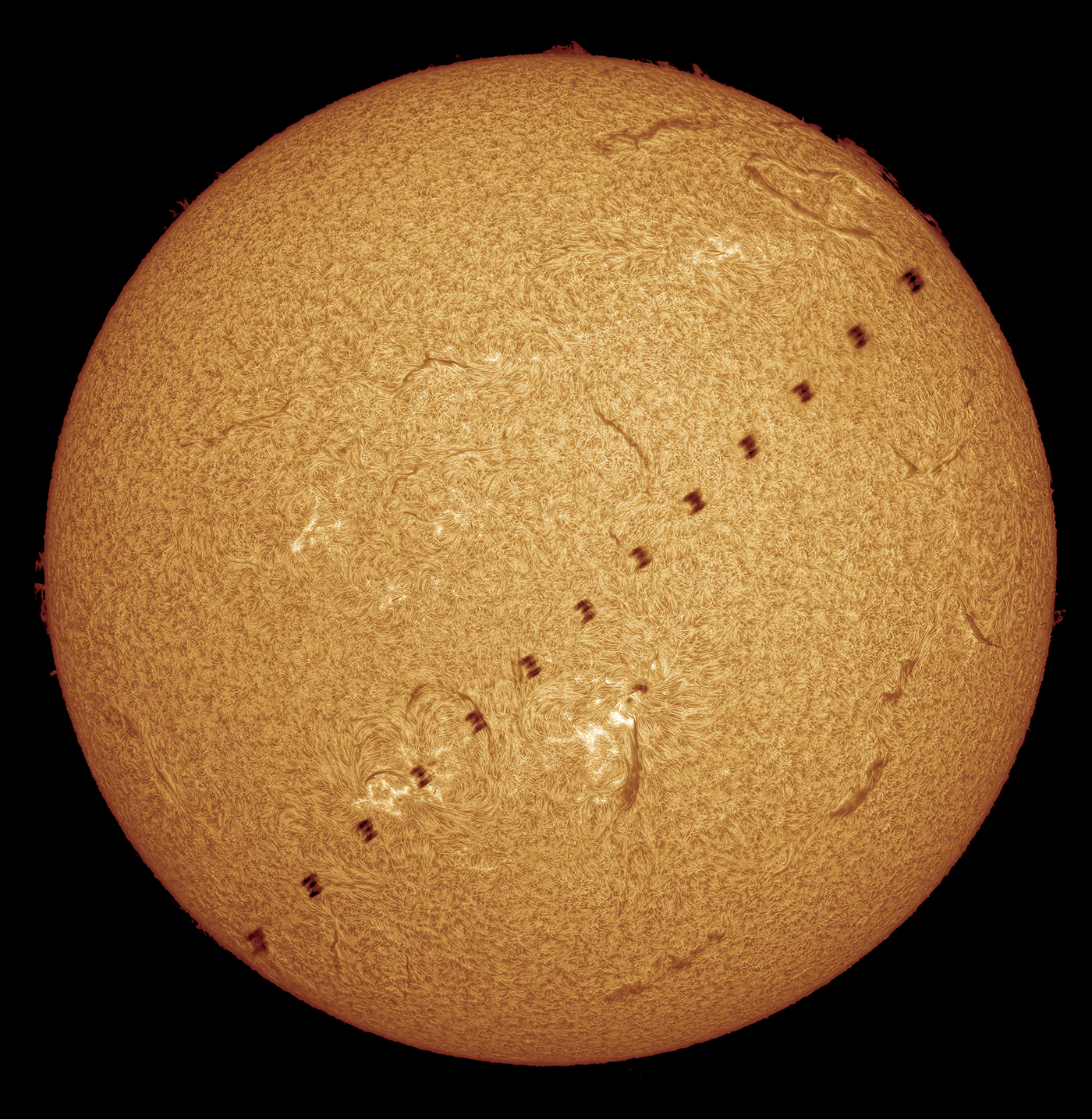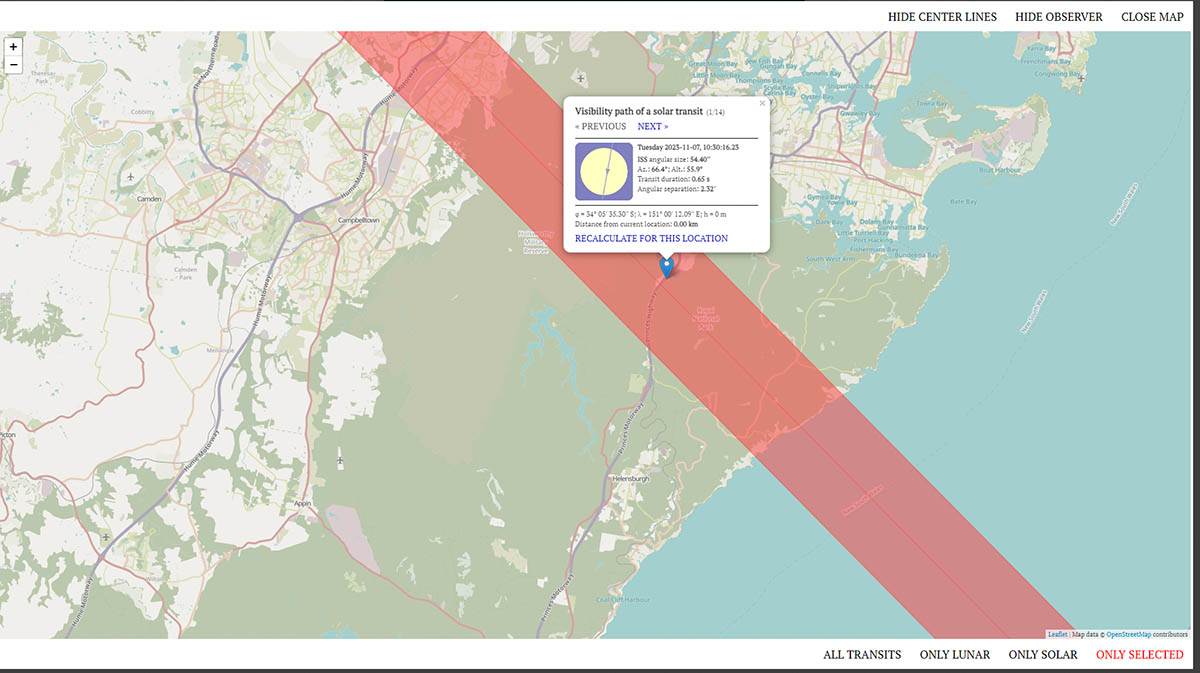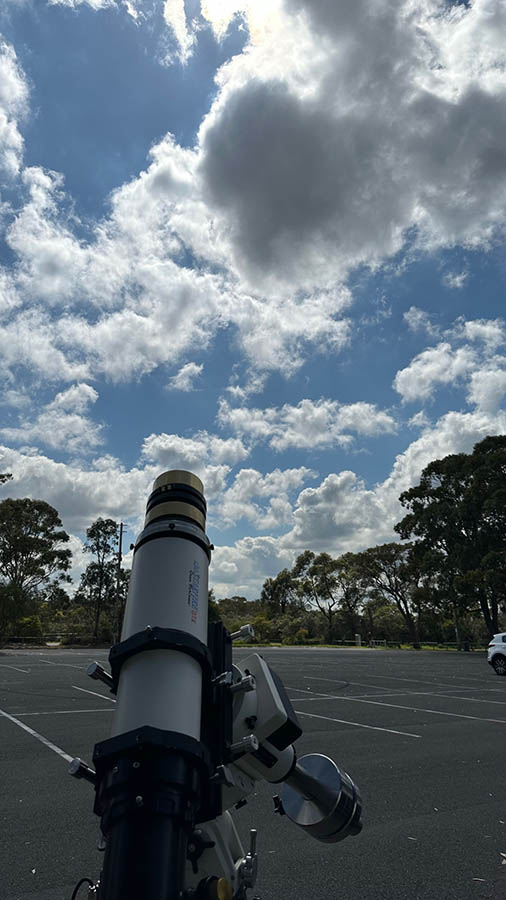
ISS transit H-alpha Sun
November 7th 2023

A recent ISS transit prediction had the ISS passing in front of the Sun and was to be visible from my
backyard observatory. However, the ISS underwent an "orbital-boost" shortly after the initial prediction.
The new post-boost ground track was still close to my home and a favorable weather forecast made
traveling to a suitable location viable.


Scattered cumulus cloud did not help!
There was considerable atmospheric turbulence
plus the cloud partially obscured the Sun
just a minute away from the predicted transit time.
Imaging a dim image through thin cloud meant the shutter speed had to be increased to 7/100th
of a second. This was simply too slow to freeze the ISS' motion which
crossed the Sun's
disk in just 0.65 seconds.
Some recommendations:
Check the ISS transit time daily during the week leading up to the transit,
as prediction times
and centreline locations are subject to revision..
Use a single stack etalon (i.e. bright image) and very high
shutter speed (1/1000th of a second or less) to record an ISS transit.
Record the Sun again (just after the transit) with a double stack system (if available) for improved disk details.
Arrive at the selected location early to allow refinement of your polar alignment, which
if unchecked will cause the Sun to slowly drift in the field of view.
Use a *really* accurate watch (e.g. Citizen Satellite Wave)
or have a GPS time base... blink and you'd miss it!
Astro-Physics AP130GTX + AP BARCON
Coronado 90mm Double-stack etalons + BF30 (Beloptik ITF)
QHY533M
Best of 2000 frames Autostakkert

Copyright Peter J Ward 2023